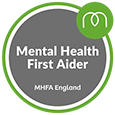Purchasing a property is likely to be one of the most significant decisions a person will ever make. There are many things to take into consideration when a person is looking to purchase a property. The size, layout and price of the property are all key aspects that can have a significant influence on whether a person decides to submit an offer for the property and complete the purchase.
Whilst the above aspects form a key part of the decision-making process, one aspect that can often be overlooked is, whether the property one is looking at is a leasehold or freehold property.
Both leasehold and freehold properties have their advantages and disadvantages and in this blog post, we will explain what both terms mean and what to look out for with each type of property.
What’s the difference between leasehold and freehold?
Essentially, leasehold and freehold are two different types of legal ownership. Depending on which of the two types of property you purchase, you may or may not be able to make your desired alterations to the property itself.
Our conveyancing team will be able to discuss which type of purchase is right for you and advise you on the next steps that you need to take when beginning the purchase process.
Leasehold
In basic terms, a leasehold property is a property that you lease from the freeholder, also known as the Landlord. This isn’t to be confused with a rented property which usually has a lease for a much shorter period of time.
The freeholder or landlord will receive rent from the leaseholder known as Ground Rent. This lease will allow the leaseholder to use the property for an extended period of time, with some leases lasting up to 999 years.
Much like rented accommodation, a lease will often include terms and conditions of use for the property.
A typical example of a leasehold property is a flat, although there are exemptions to the rule. In most cases, a leasehold property will result in the leaseholder looking after certain parts of the property, with the remaining responsibility for the property falling to the person who truly owns the property (freeholder).
For example, under the terms of the lease, the freeholder may be required to ensure communal areas are maintained and that the exterior of the building is also maintained, whilst the maintenance of the interior of the property is carried out by the leaseholder.
The leaseholder will also have to ask the freeholder for permission if they want to change any part of the property’s layout.
Those who are considering making a leasehold purchase will also need to account and budget for ground rent. This is a type of rent which is paid annually in order to maintain the right to occupy the property as a leaseholder. Most leases also include the requirement for the Tenant to pay towards the upkeep of the main building, including insurance, maintenance of shared areas, etc. This is known as service charge.
The key thing to remember when purchasing a leasehold property is that when the lease runs out, the property will revert back to the freeholder who owns it in its entirety and you will not receive any money in return for the property that you were leasing.
Although leasehold properties may seem relatively restricted in their use, they do have a few perks. As we have mentioned communal areas are often taken care of by the freeholder, and leaseholders often don’t have to worry about building repairs or buildings insurance.
However, when it comes to selling the property towards the end of the lease, the property itself will usually be worth less than you paid and if you want the lease extended it will be at the discretion of the freeholder, who can refuse if they want to.
If you are considering purchasing a leasehold property, make sure you are fully aware of how many years are left on the lease at the time of purchase, as well as enquiring about any upcoming building repairs that may affect your quality of life inside the leasehold property.
Freehold
If a person purchases a freehold property, they will own the building and the land that comes with the property outright and there will be far fewer restrictions for the owner compared to a leasehold property.
As a result, a freehold owner can benefit from not having to pay ground rent, not having to rely on the freeholder to fix any issues with communal areas.
However, it’s worth remembering that all the freedom of a freehold property does come at a cost. Should any issues arise regarding the property or land, it will be up to you as the owner to remedy the situation, whether it be structural repairs or otherwise. This can sometimes make being a freehold property owner expensive.
Should you opt for freehold or leasehold?
Whether you decide to purchase a freehold or leasehold property, it’s important you understand the potential benefits and risk of owning either type of property.
To ensure you make the right choice, our conveyancing team can provide you with all the information you need to make an informed decision and help you be totally satisfied with your purchase.
Our conveyancing team are experts in dealing with both leasehold and freehold transactions and can ensure the conveyancing process is carried out professionally and efficiently, with no stone left unturned.
The Thorneycroft Solicitors conveyancing team will prepare any contracts that are needed and will liaise with the other party’s solicitors in order to secure a successful completion of the purchase or sale.
As part of the conveyancing process, they will also highlight any unforeseen problems or ownership issues that may affect your use of the property.
If you would like peace of mind that your property sale or purchase will be dealt with by a Conveyancing Quality Scheme accredited firm and one of the leading team of conveyancers in the North West, you can arrange your appointment with a member of our conveyancing team today by calling 0330 058 0118 for free or alternatively you can click the button below to make an enquiry for a conveyancing quote.












